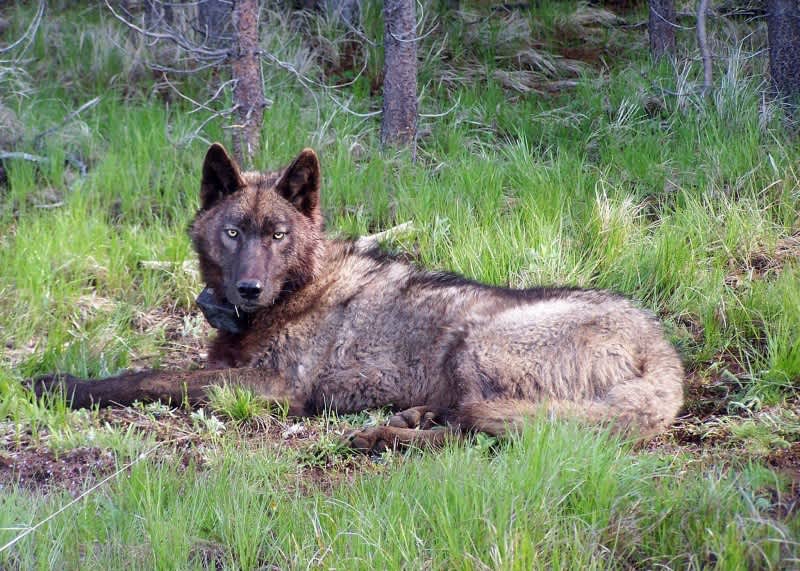Officials: Wolves Continue to Enter California from Oregon
OutdoorHub Reporters 01.08.16

Officials with the California Department of Fish and Wildlife (DFW) confirmed recently that another gray wolf has entered California from Oregon last month.
According to the department, the wolf is a three-year-old male named OR-25 with dark fur. Officials say that the wolf has most recently been spotted in Modoc County and is likely following basic dispersal behavior. Young male wolves like to wander, especially if there are no available females nearby. That same reason was why OR-7, the first gray wolf to enter California in about 100 years, across the state border in 2011. OR-7 has since returned to Oregon to start its own pack, but experts are unsure if OR-25 will do the same, especially since there is now a wolf pack in California.
Last August, biologists retrieved pictures from trail cameras in Siskiyou County that showed five wolf pups and two adults. The DFW designated the family group as the “Shasta” Pack, the first wolf pack in California since the early 1900s. The arrival of wolves in the state was applauded by wolf advocacy groups, but became a topic of concern among others. Ranchers and hunters say they are worried about the possible impacts of a future wolf population on livestock and wildlife, and how the DFW will manage the species.
The department met with the California Cattlemen’s Association, California Deer Association, and Rocky Mountain Elk Foundation last year to develop its current draft for the Wolf Conservation Plan, which was released for public input in December. Animal advocacy groups such as the Center for Biological Diversity and Defenders of Wildlife were also included.
“California is clearly wolf country because they keep coming here from Oregon. This is a great moment to celebrate,” said Amaroq Weiss, West Coast wolf organizer for the Center for Biological Diversity, in a press release. “Perhaps they are following a scent trail from other wolves that have come here the past couple years but, whatever the reason, it makes it all the more necessary to ensure they have the protections needed to thrive once they get here.”
Others are less enthusiastic about the thought of more wolves moving into California. In November, a rancher in Siskiyou County reported what may be the first case of wolf depredation after a calf was found dead. Investigators from the DFW and veterinarians who examined the carcass said it was likely—but not confirmed—to be the result of a wolf attack. If more wolves are crossing the border, then they may decide to stay in California and start their own packs as well. The DFW was able to track OR-25 because it had on a tracking collar put on it by Oregon officials. The department is unable to say how many of the animals without collars, such as the Shasta Pack, have also crossed into the state.

